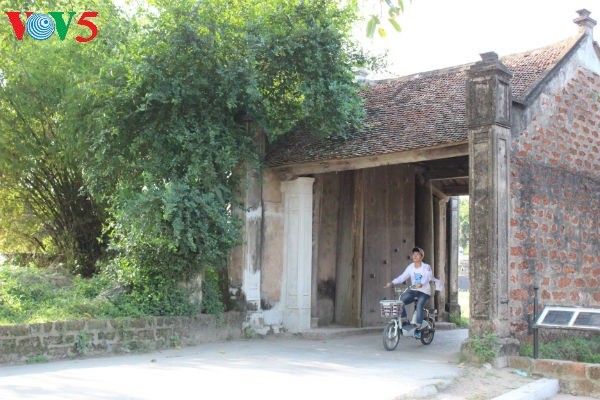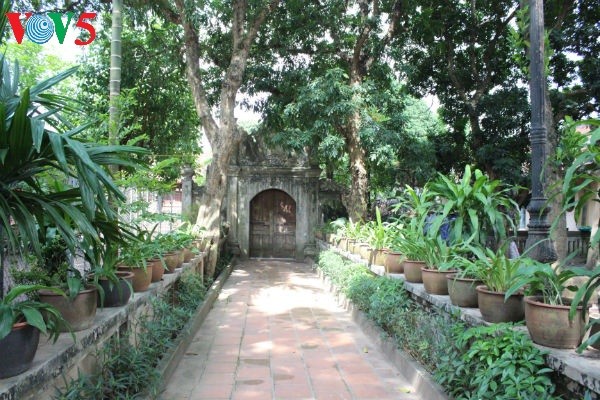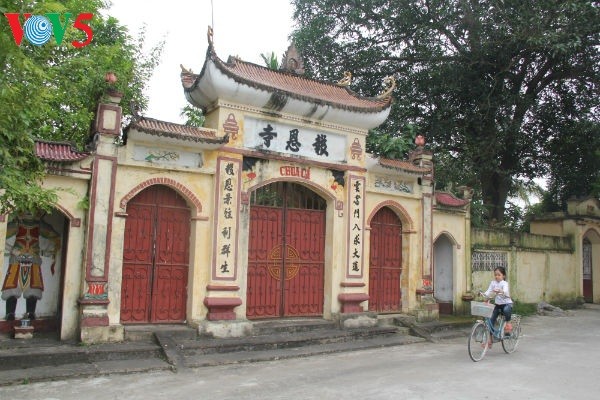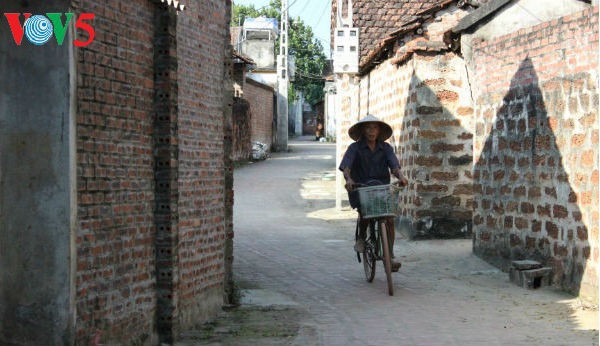(VOVworld)-Villages in the northern region of Vietnam are populated by people of the same bloodline sharing the same means of livelihood. The close link between villagers is evident in land ownership, village architecture, spiritual life, lifestyle, and community standards.
 |
| Duong Lam village gate is a two-roof house (Photo: Lan Anh-VOV5) |
The Red River Delta is the cradle of ancient Vietnamese culture and civilization. The delta’s residents subsist mainly on wet rice farming and are influenced by the ideologies of Buddhism and Confucianism, which attach great importance to benevolence and family and social hierarchy.
A typical Red River Delta village is characterized by a bamboo hedge, one or more gates, a communal house, a pagoda, and a shrine.
An old banyan tree symbolizes the perpetuity of time and stands witness to the village’s ups and downs through generations of villagers. The banyan tree stands at the front, center, or back of the village, or next to the village communal house, temple, or pagoda.
 |
| The road leading to a pagoda in Son Tay Town, 40 km to the west of Hanoi, retains ancient features. (Photo: Lan Anh-VOV5) |
There are other typical architectural structures in northern villages such as bridges made of bricks and stones.
The first impression of a village is its gate. It is a typical architectural work which embodies the local culture. The gate is embossed with the village name and parallel sentences describing the village’s origin, lifestyle, and history, and expressing the villagers’ pride.
Doctor Tran Huu Son, a folklore researcher with the Vietnam Folklore Arts Association, told VOV that “A village gate demarcates the territory it claims from the outside world. When a village’s economy grows, developed by famous people and noble clans, a bigger and more sophisticated gate is built.”
The communal house is one of the most typical architectural structures of a northern village. A communal house is usually the biggest and most formal house in the village.
The communal house honors the village’s Tutelary God, the village’s founders, or heroes who sacrificed their lives for the locals or the nation. The communal house is where the most important village events take place.
During a village festival, a palanquin procession is held to commemorate the legend and merits of the Tutelary God. The communal house witnesses the ;ife of the village through many generations.
The village pagoda is most closely linked to the villagers’ spiritual life, says superior Buddhist monk Thich Tien Dat, head of Cu Da Pagoda in Hanoi’s outskirts.
He says “Buddhism came to Vietnam a long time ago. Wherever there is a village and villagers, there is a village pagoda, a village temple, and a village shrine. The pagoda is a place for spiritual and religious activities, for the locals to express their beliefs and aspirations. Buddhism, with its central philosophy of mercy and intellect, leads people to a life of supreme truth, goodness, and beauty. The pagoda is the spiritual mainstay of the villagers.”
 |
| The gate of a pagoda in Phu Xuyen district, Hanoi. (Photo: Lan Anh-VOV5) |
The village well is considered a sacred place. Next to it there is often a shrine for worshipping a genie. On the first and fifteenth day of the lunar month or during festivals villagers go to the shrine to pray for good luck and take home early morning water from the well for worshipping.
The religious structures in a village also include a temple, a palace, and a village shrine. According to folk belief, Mother Goddesses, saints, divinities, and national heroes who greatly contributed to the village should be worshipped in temples or palaces and shrines.
 |
| Today Viet villages are characterized by alleys paved with bricks, and ancient and modern houses. (Photo: Lan Anh-VOV5) |
Houses are built close to each other along the village alleys. Surrounded by hibiscus fences, each has a front yard with a row of areca trees and a garden where banana trees are often grown. Rich villagers build houses with 5 or 7 rooms. Poorer houses have 3 rooms and 2 sheds. An ancestor worshipping altar in the main room is indispensable for a rural Vietnamese family. There is also a low wooden platform where family and guests can sit and chat.
Each village has its own cemetery, which is located outside the village. The village graveyard and the geomancy of tombs are given much importance. Some villages have a custom of burying the dead in the family rice fields.